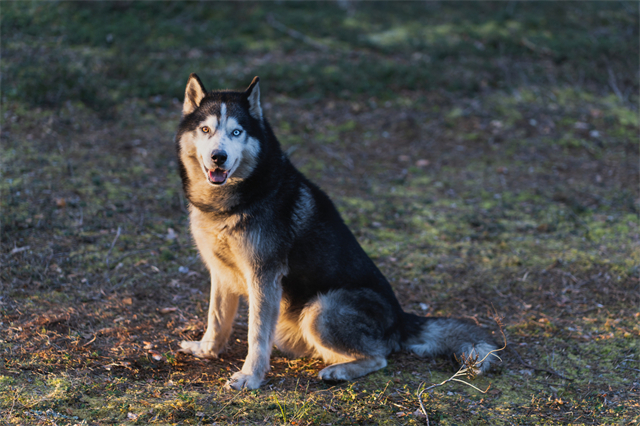The Siberian Husky is a striking, medium-sized working dog known for its endurance, intelligence, and wolf-like appearance. Originating from Northeast Asia, this breed was historically bred by the Chukchi people for sledding and companionship.
 Article source:https://www.petwoah.com/pet Site-https://www.petwoah.com/559.html
Article source:https://www.petwoah.com/pet Site-https://www.petwoah.com/559.html
Today, the Siberian Husky captivates families worldwide with its playful demeanor, striking blue or multicolored eyes, and thick double coat. Whether you’re considering adopting one or simply curious about the breed, this guide explores their history, characteristics, and care needs.Article source:https://www.petwoah.com/Pet Site-https://www.petwoah.com/559.html
History of the Siberian Husky
The Siberian Husky traces its roots to Siberia, where the Chukchi tribe relied on these dogs for transportation and warmth in harsh Arctic conditions. Their exceptional stamina and ability to work in teams made them invaluable.Article source:https://www.petwoah.com/Pet Site-https://www.petwoah.com/559.html
In the early 20th century, the breed gained global recognition after participating in sledding competitions, including Alaska’s All-Alaska Sweepstakes. Their popularity soared in the U.S. during the 1925 Nome serum run, where Huskies delivered life-saving medicine through a blizzard.Article source:https://www.petwoah.com/Pet Site-https://www.petwoah.com/559.html
Key Characteristics of the Siberian Husky
1. Appearance
The Siberian Husky boasts a compact, muscular build with erect triangular ears and a bushy tail. Their almond-shaped eyes can be blue, brown, or heterochromatic (two different colors).Article source:https://www.petwoah.com/Pet Site-https://www.petwoah.com/559.html
The breed’s dense double coat, designed for extreme cold, comes in colors like black, gray, red, and agouti, often with striking facial masks.Article source:https://www.petwoah.com/Pet Site-https://www.petwoah.com/559.html
2. Temperament
Friendly and outgoing, Siberian Huskies thrive in social environments. They are pack-oriented, making them great with children and other dogs. However, their high energy and curiosity require ample mental and physical stimulation. Note: Their independent streak can challenge first-time dog owners.Article source:https://www.petwoah.com/Pet Site-https://www.petwoah.com/559.html
3. Energy Levels
Bred for endurance, Siberian Huskies need 1–2 hours of daily exercise. Activities like hiking, running, or agility training prevent boredom-driven behaviors like digging or escaping.Article source:https://www.petwoah.com/Pet Site-https://www.petwoah.com/559.html
Caring for Your Siberian Husky
1. Grooming Needs
Their double coat sheds heavily twice a year (“blowing coat”). Weekly brushing reduces loose fur, while baths are needed only occasionally. Trim nails and check ears regularly to prevent infections.Article source:https://www.petwoah.com/Pet Site-https://www.petwoah.com/559.html
2. Diet and Nutrition
Feed high-quality dog food rich in protein and fats to support their active lifestyle. Avoid overfeeding—Siberian Huskies are prone to obesity if under-exercised.Article source:https://www.petwoah.com/Pet Site-https://www.petwoah.com/559.html
3. Training Tips
Early socialization and positive reinforcement work best. Huskies respond poorly to harsh methods. Teach recall commands diligently, as their prey drive may lead them to chase small animals.
Common Health Considerations
Siberian Huskies are generally healthy but may face breed-specific issues:
- Hip Dysplasia: Monitor joint health with regular vet checkups.
- Eye Conditions: Progressive retinal atrophy and cataracts are potential concerns.
- Skin Allergies: Use hypoallergenic shampoos if irritation occurs.
Routine vet visits and a balanced lifestyle ensure a lifespan of 12–15 years.
FAQs About Siberian Huskies
- Q: Are Siberian Huskies good apartment dogs?
- A: They adapt to apartments if exercised sufficiently, but a yard is ideal.
- Q: Do they tolerate hot climates?
- A: Their thick coat insulates against heat, but provide shade and hydration in summer.
- Q: Why do Huskies howl instead of bark?
- A: Howling is a natural communication trait inherited from their sled-pulling ancestors.
The Siberian Husky is a loyal, adventurous companion suited for active owners. By understanding their history, meeting their exercise needs, and prioritizing grooming, you’ll build a rewarding bond with this remarkable breed. Whether exploring trails or playing in the snow, the Siberian Husky brings joy and energy to every adventure.

